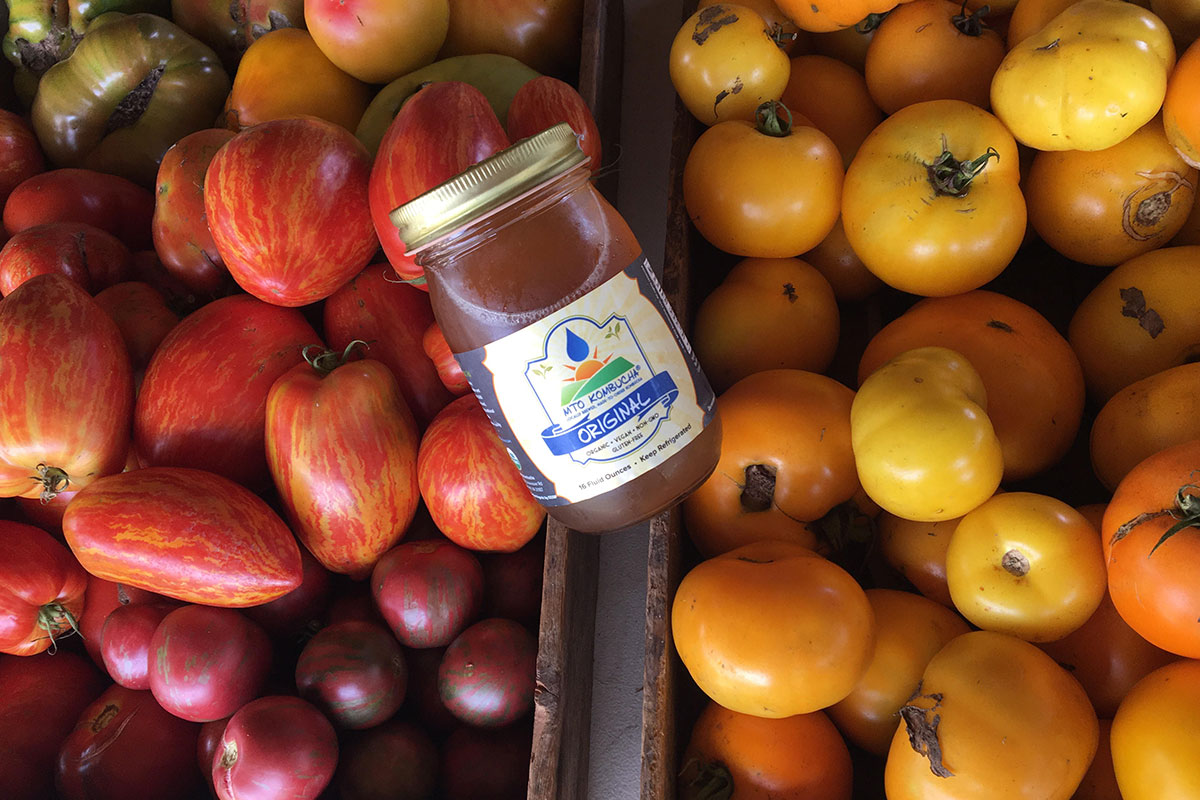
Today, the odds are slim that you’ll walk into your local market or grocery store and not see bottles of kombucha aligning shelves. Kombucha, which is a beverage produced by fermenting sweet tea with a culture of yeast and bacteria, has recently evolved to be a staple in the diet of many, especially in the midst of the wellness movement.
While the drink’s origins date back at least 2,000 years to China at a time where people believed it had strong healing powers. According to an article published by the CyTA – Journal of Food in 2018, kombucha consumption has been associated with some health effects, including the reduction of cholesterol levels and blood pressure, improvement of the liver, reduction of cancer propagation, gastrointestinal functions and the immune system as a whole.
At MTO Kombucha, located in Vint Hill in Fauquier County, visitors continue to come back for those benefits on a regular basis, especially now that the shop’s taproom is open full-time. The taproom serves as a kombucha bar where guests can taste all 19 flavors, including lemon rosemary and lime basil, fill mini growers and growlers and even try out a custom blend. All of the company’s creations wouldn’t be possible without its local brewers, including Ruddy Chavez, who was making kombucha at home for about seven years before finding MTOK. Here, Chavez and general manager Megan Donica share exactly what it takes to brew kombucha.
When people come into your shop, what are they looking to get out of drinking kombucha?
MD: Kombucha has a myriad of benefits … we have avid drinkers that swear by the healing properties of kombucha. We help folks recover from excessive antibiotic use, candida issues, arthritis, trouble sleeping, etc.
What ingredients and materials are necessary for the perfect brew?
MD: We recommend using only organic ingredients (tea, sugar, water, SCOBY) in glass, or stainless steel vessels.
RC: The temperature is very important and ideally, you want it to be around 80 degrees when you combine everything. We have high-tech equipment that controls how humid it gets in there, but if you’re doing it at home, they do sell these thermal heaters that go around the jar and let you control the temperature.
Walk me through the step-by-step process of brewing the drink.
RC: One of the first things you want to do is basically just make sweet tea. From there, you want to make sure that the tea is cooled down to at least room temperature. Next, you will add what we call pre-brew, homebrewers call it starter. It’s basically just kombucha already. The ratio for that is very important, it has to be at least 10% of the sweet tea. So for example, let’s say you’re doing five gallons of sweet tea, then you need half a gallon of pre-brew. The reason behind that is that the ratio will prevent any mold; it will make it acidic enough where mold can’t exist in the environment.
After that, you’re going to want to put the SCOBY in there, which is a symbiotic colony of bacteria and yeast. The SCOBY is pretty much the powerhouse in making kombucha because it’s eating the sugar from the sweet tea and converting it into probiotics, beneficial digestive acids, basically everything that’s healthy about kombucha.
So then from there, we wait—sometimes it can be four weeks, sometimes eight weeks—it has a mind of its own. We constantly monitor the pH levels of the brew and check that around twice a week. Once we get to 2.6 or 2.7, we do a taste test. If someone doesn’t have a pH test, the best thing to do is taste the kombucha and basically once it doesn’t taste like sweet tea and actually has a kick, then it’s kombucha already.
When it’s kombucha, it’s time to add flavor. Typically, you can just put anything you want. If you want peach, mango or lemon you leave it in there to steep for three days and then pull out the ingredients. It will then be flavored to whatever your liking is.
How long does it typically take for the fermentation to be complete?
MD: This varies. MTOK uses an open vat fermentation technique, true to tradition, so the SCOBYs can take as long as eight weeks to transform the tea into kombucha.
RC: For the flavor to set in, we have learned that with spices or herbs or hardier material, they flavor in five days. For something like citrus, it will typically take four days and ideally for a berry it’s three days. It’s much better to use something that’s dehydrated because when it’s the whole berry, the kombucha has a lot more to break down.
What are your favorite flavors?
MD: Out of our 19, I have my top five: Ginger Lemon, Vanilla-Choc-Kafe, Raspberry, Anise, Mint.
For more information on MTO Kombucha, visit mtokombucha.com. // 7124 Farm Station Road Vint Hill; 12-pint glasses $48
Want more health content? Subscribe to our weekly newsletter.

